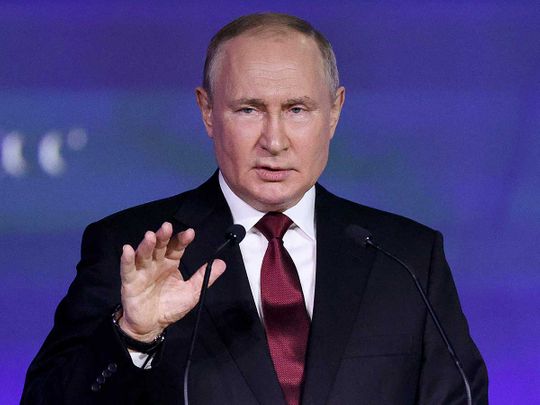
Russia defaulted on its external sovereign bonds for the first time in a century, the culmination of ever-tougher Western sanctions that shut down payment routes to overseas creditors.
For months, Russia had found paths around the penalties imposed after the Kremlin’s attack on Ukraine. But at the end of the day on Sunday, the grace period on about $100 million of trapped interest payments due May 27 expired, a deadline considered an “Event of Default” if missed.
The route to this point has been far from normal, as Russia has the resources to pay its bills - and tried to do so - but was blocked by the sanctions. Those restrictions also mean there’s huge uncertainty about what comes next, and about how investors can go about getting their money.
“With Russia benefiting from the high price of its energy exports, it clearly has both the means and the desire to pay its foreign debt,” said Giles Coghlan, chief analyst at HYCM Group. It’s a “default in a technical sense, so many investors may be prepared to wait it out”.
Given the damage already done to the economy and markets, the default is also mostly symbolic for now, and matters little to Russians dealing with double-digit inflation and the worst economic contraction in years. But still, it’s a grim marker in the country’s rapid transformation into an economic, financial and political outcast. The nation’s eurobonds have traded at distressed levels since the start of March, the central bank’s foreign reserves remain frozen, and the biggest banks are severed from the global financial system.
Russia has pushed back against the default designation, saying it has the funds to cover any bills and has been forced into non-payment.
As it tried to twist its way out, it announced last week that it would switch to servicing its $40 billion of outstanding sovereign debt in rubles, criticising a “force-majeure” situation it said was artificially manufactured by the West.
Russia’s last sovereign default occurred in 1998, during the nation’s financial collapse and ruble devaluation.
At the time, Russia avoided defaulting on its foreign eurobonds, although President Boris Yeltsin’s government reneged on $40 billion of ruble-denominated debt, and also missed payments on dollar notes issued by state-owned Vnesheconombank.
While those bonds were issued after an agreement with the so-called London Club in 1997 to restructure Soviet-era debt held by Western banks, they were technically obligations of Vnesheconombank rather than the Russian Federation, according to a paper published by the International Monetary Fund. In May 1999, the government also defaulted on a Soviet-era dollar bond, known as the MinFin III that was domestically issued, but was widely held by foreign investors.
According to Lee Buchheit and Elena Daly, sovereign debt lawyers who provided advice to Russia during its 1990s restructuring, while the country did restructure some of its debt then, that didn’t include its eurobonds at the time.
“MinFins, while denominated in dollars, were governed by Russian law and therefore could be viewed as internal debt,” they said.
The last time Russia fell into direct default vis-a-vis its foreign creditors was more than a century ago, when the Bolsheviks under Vladimir Lenin repudiated the nation’s staggering debt load in 1918.








